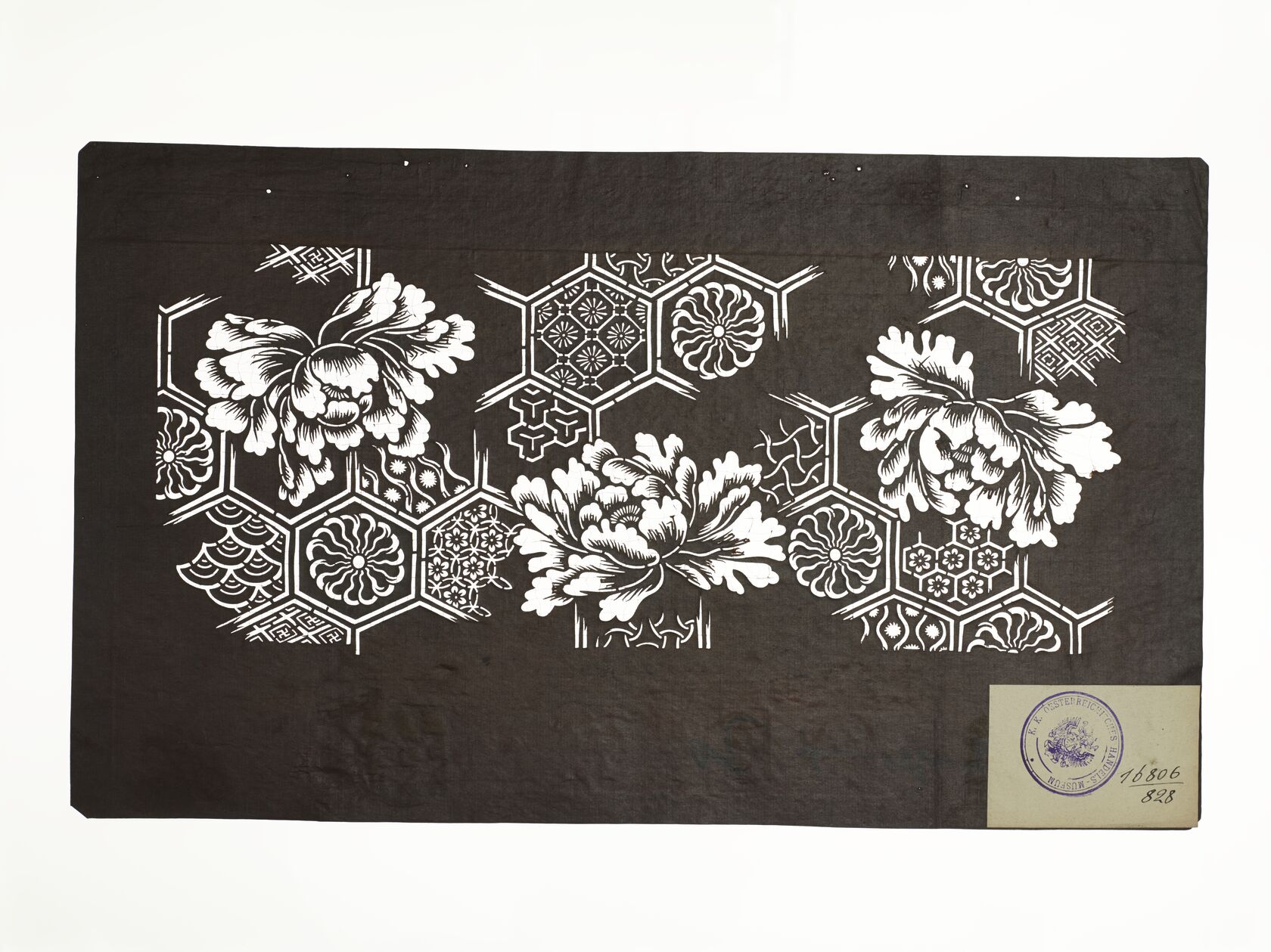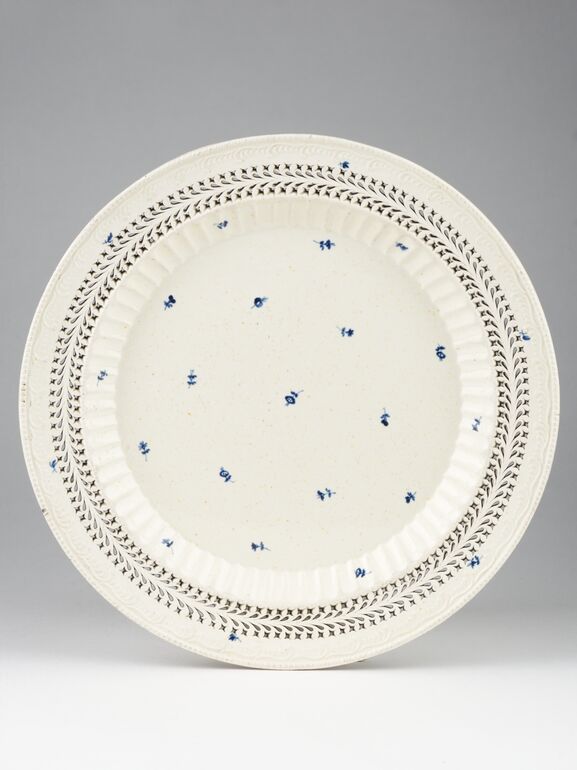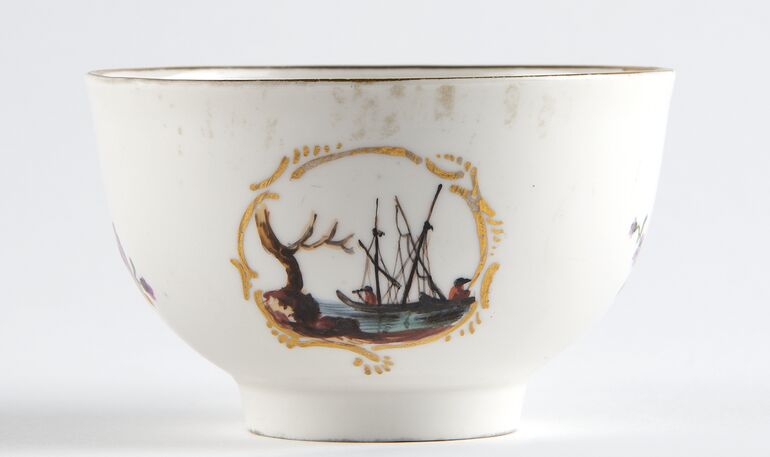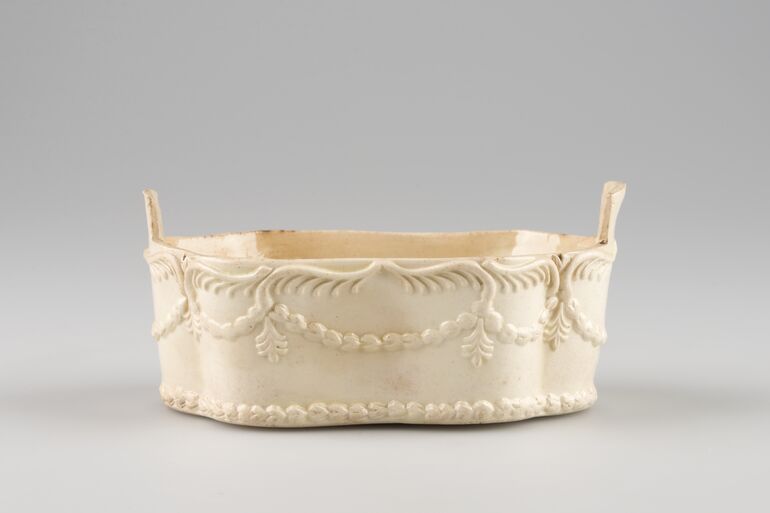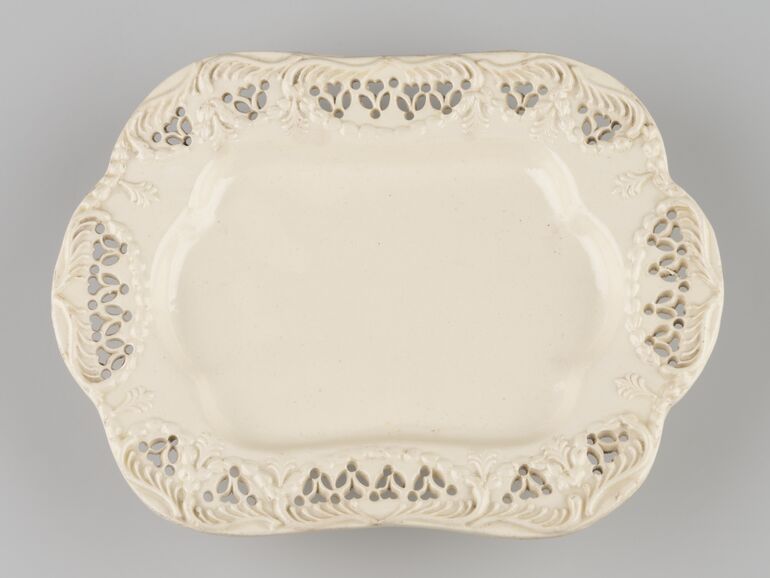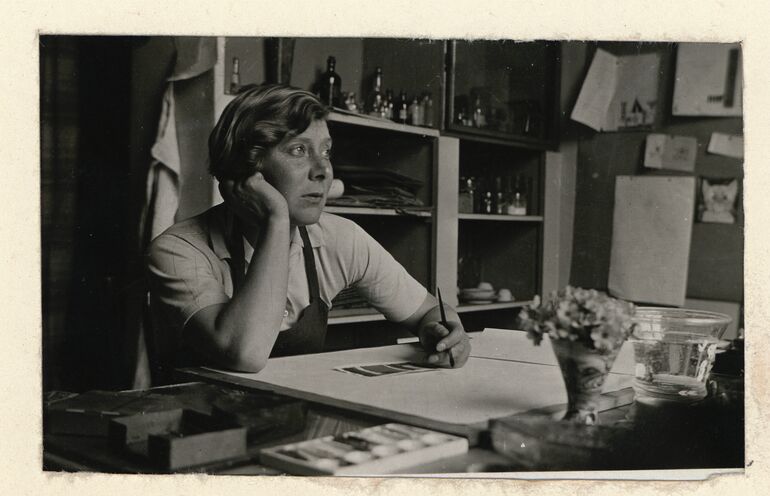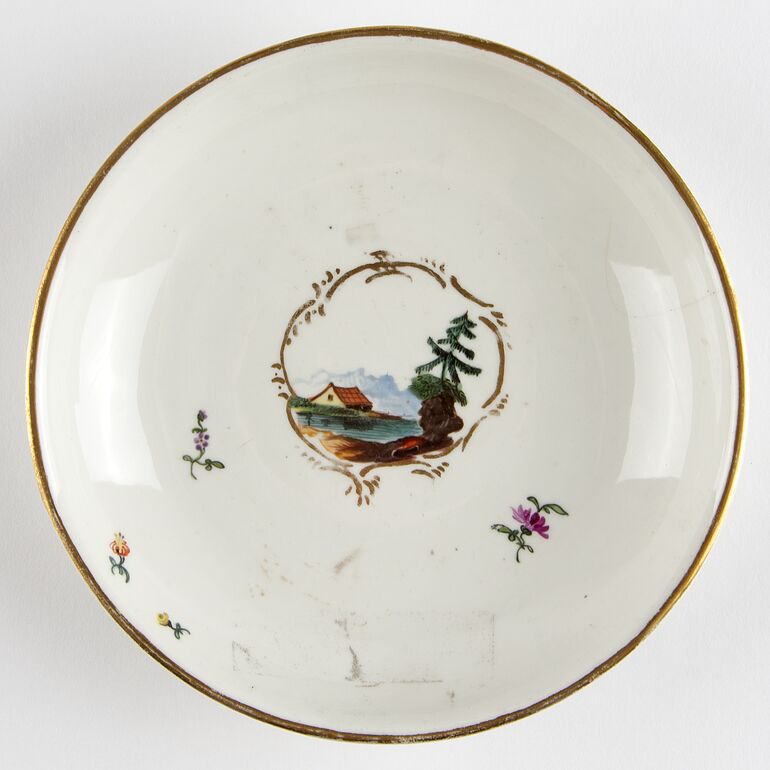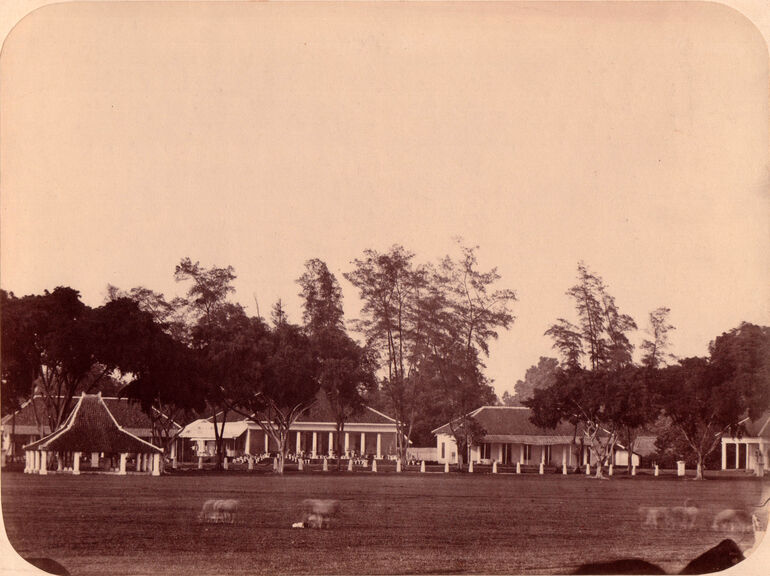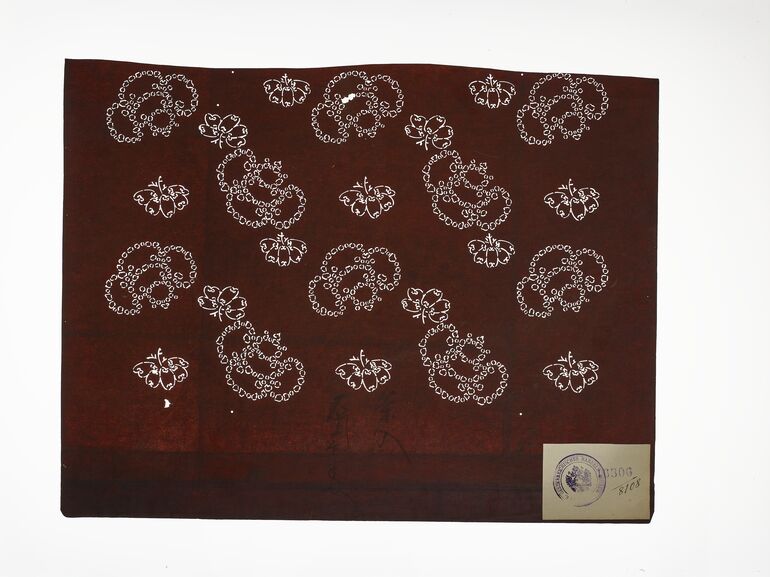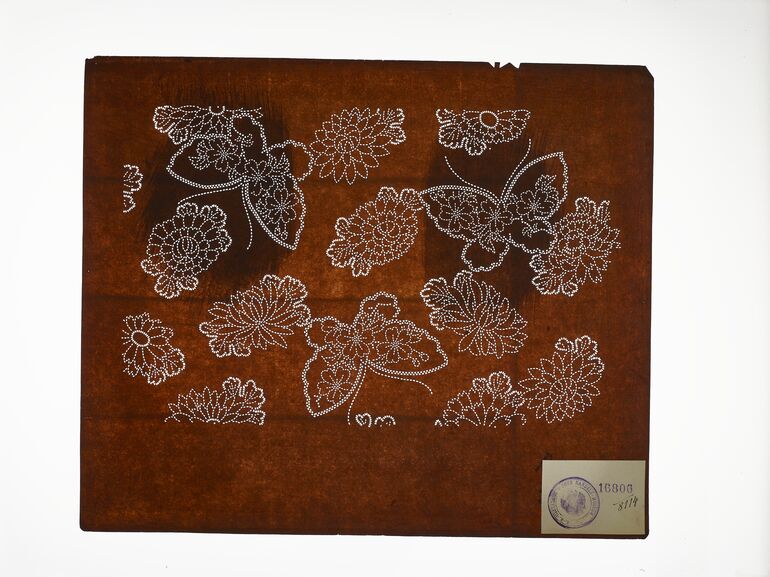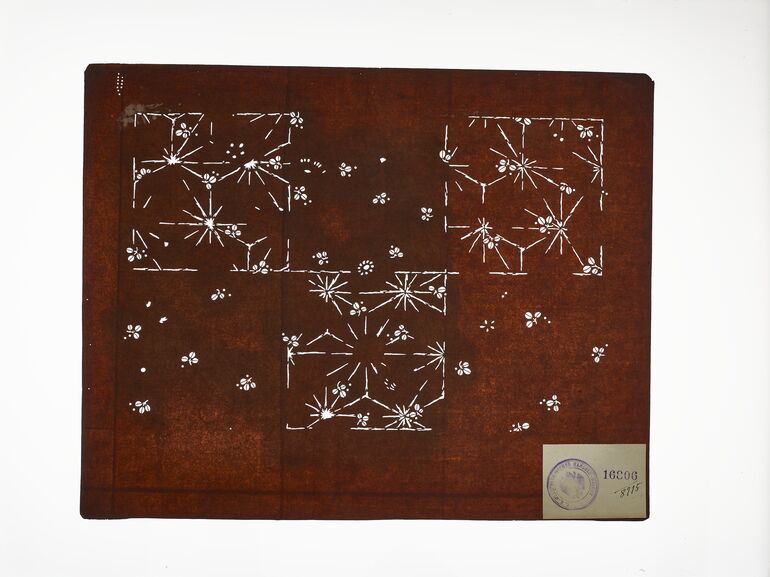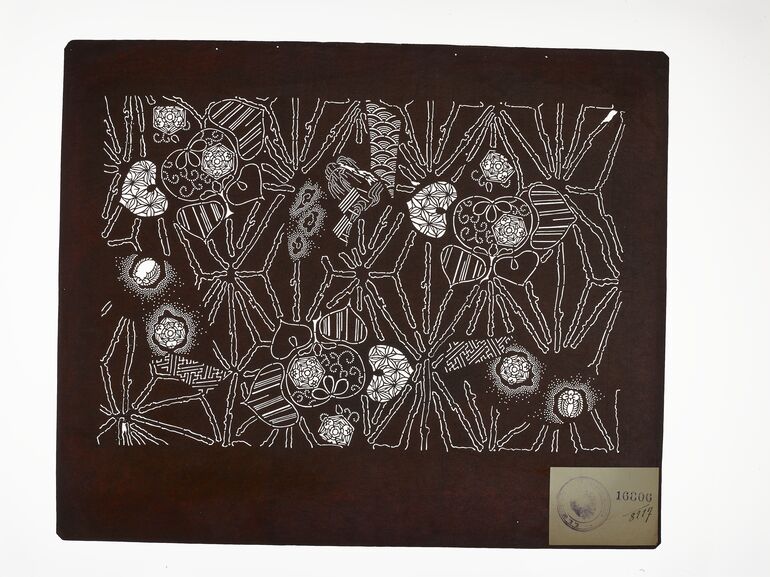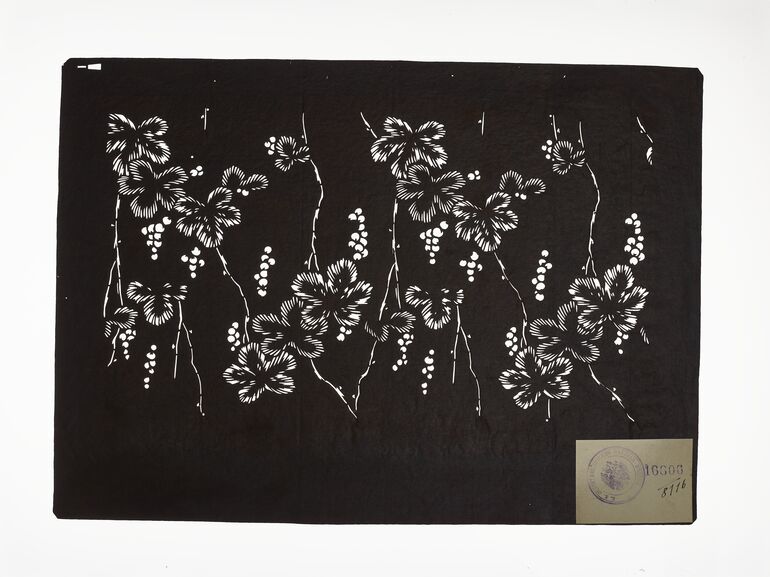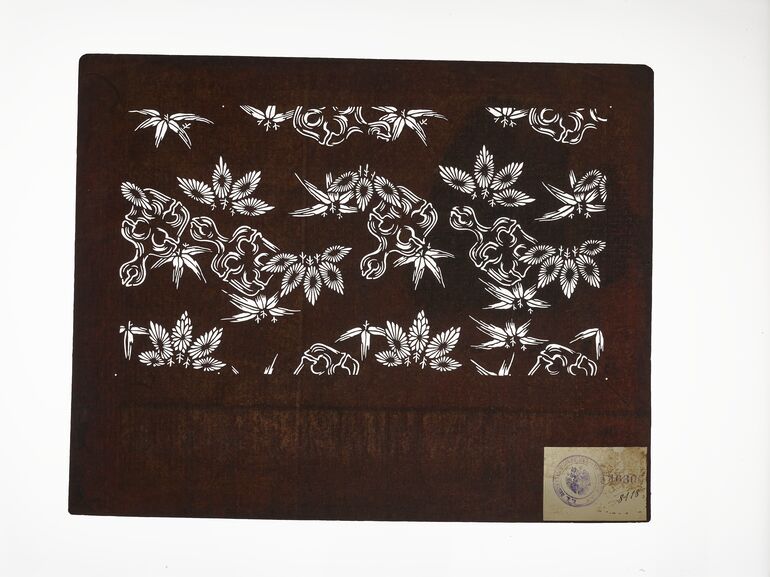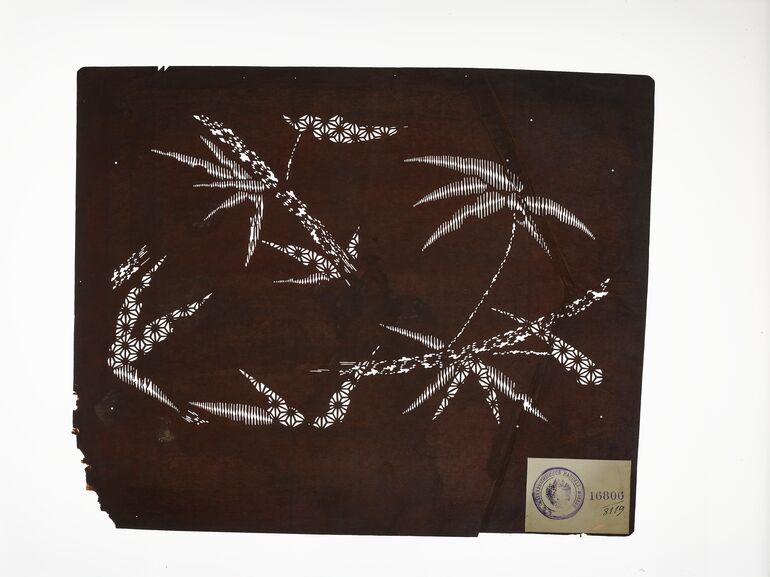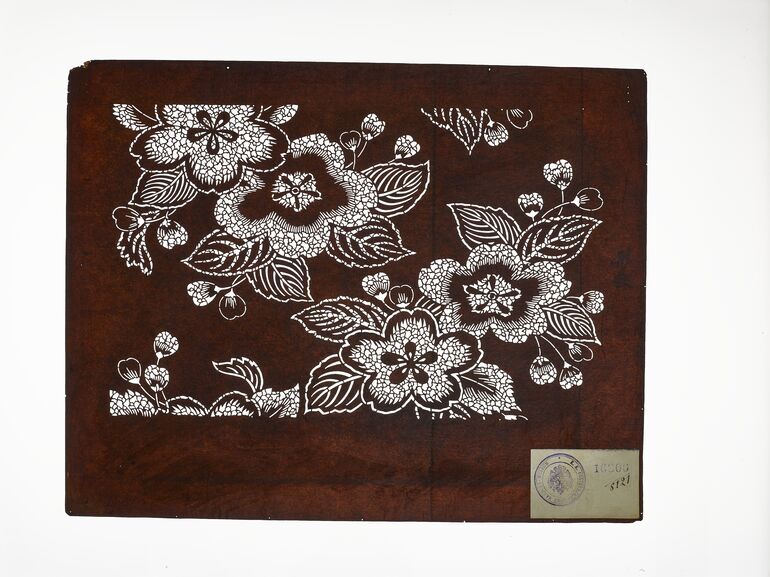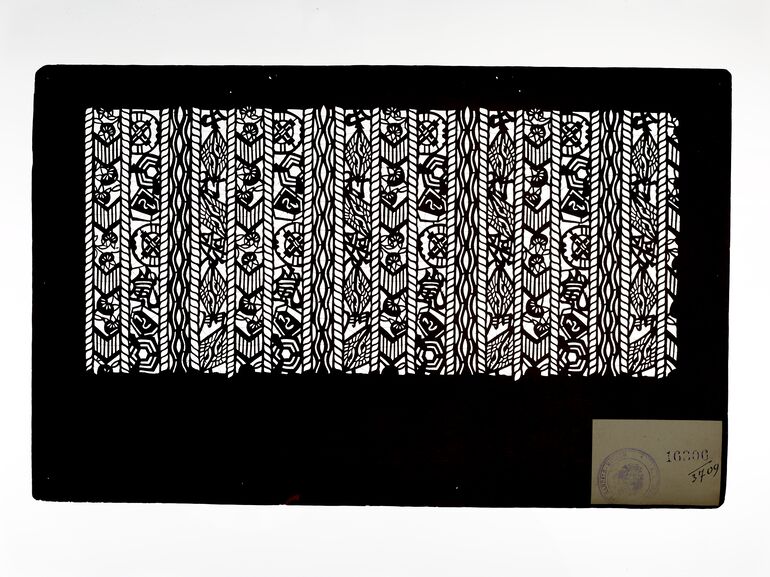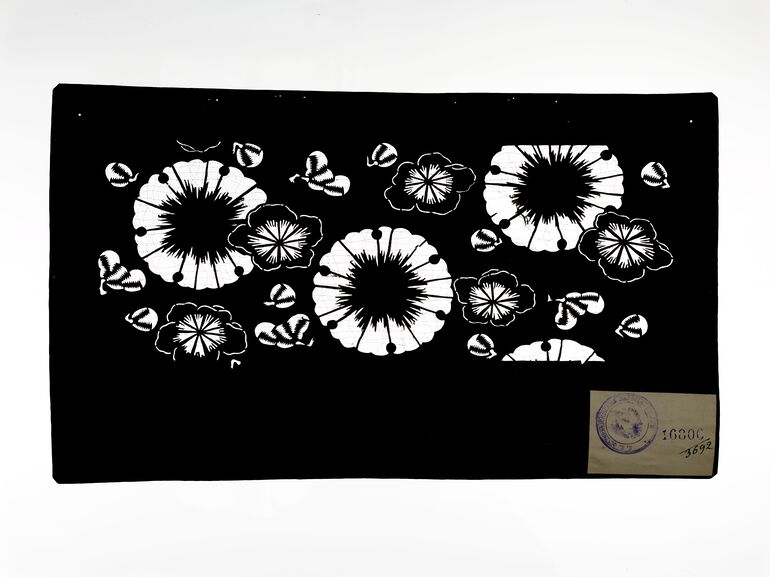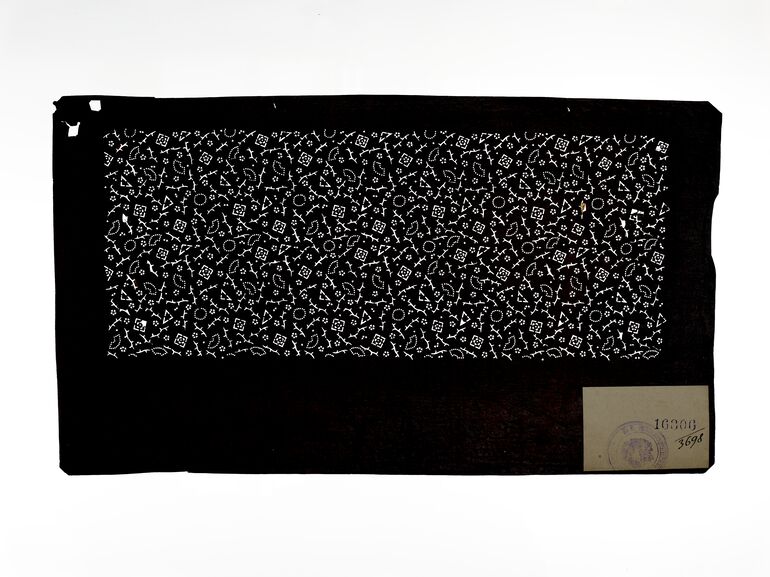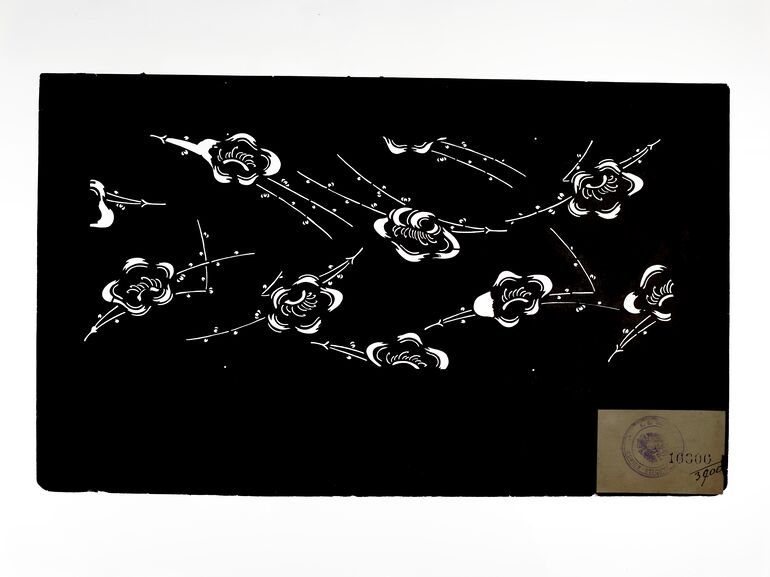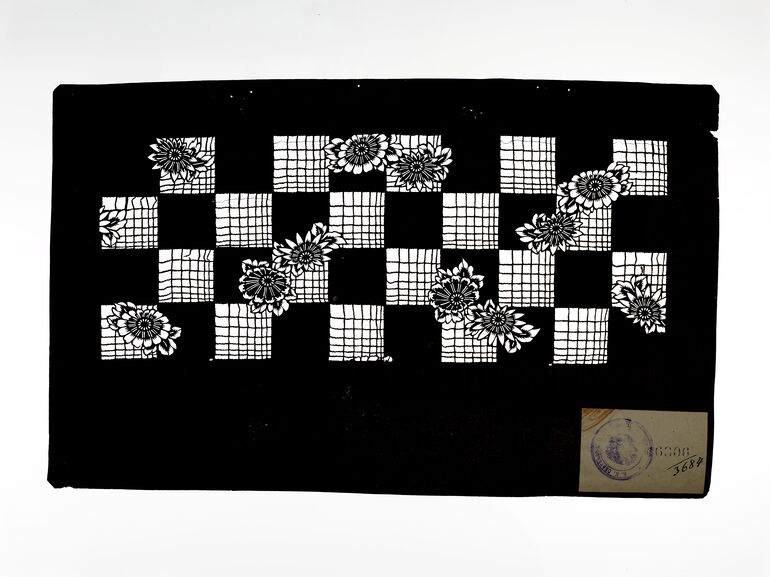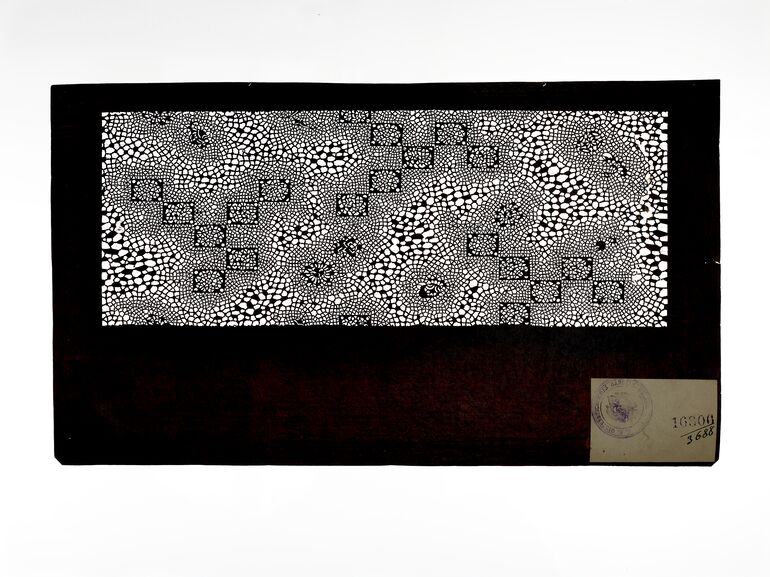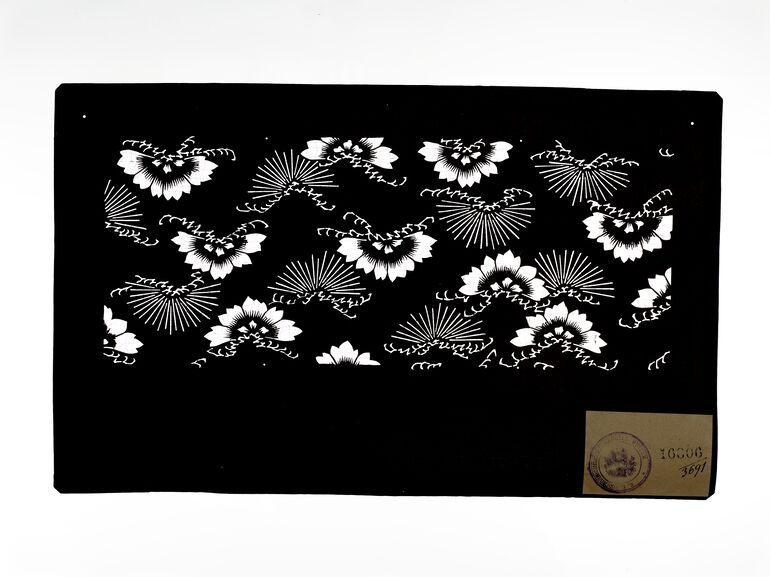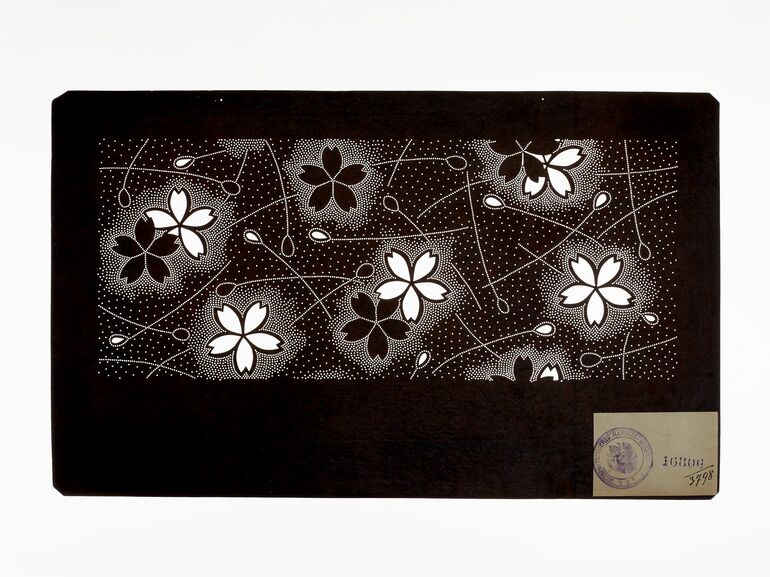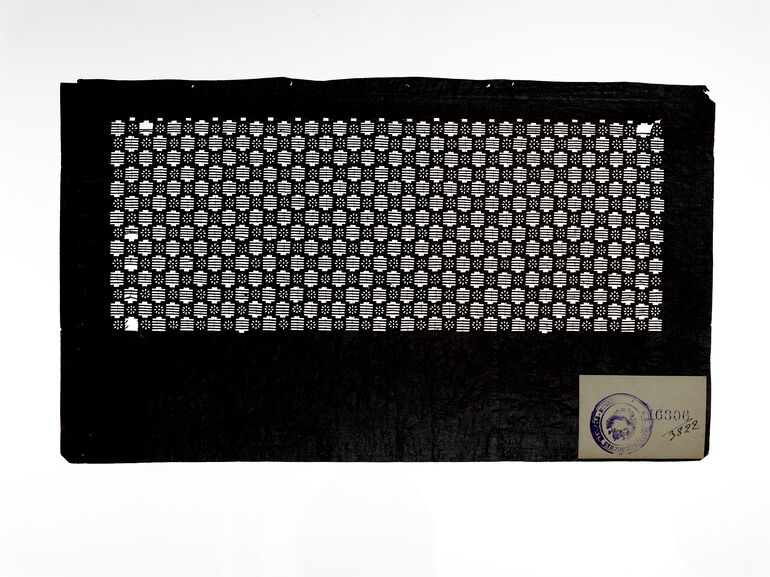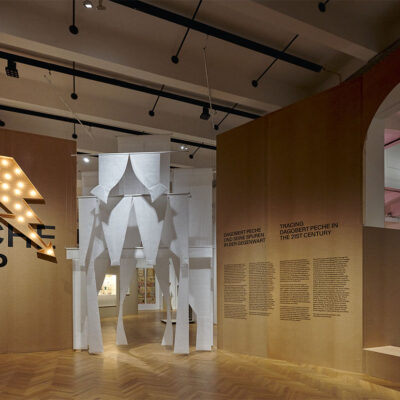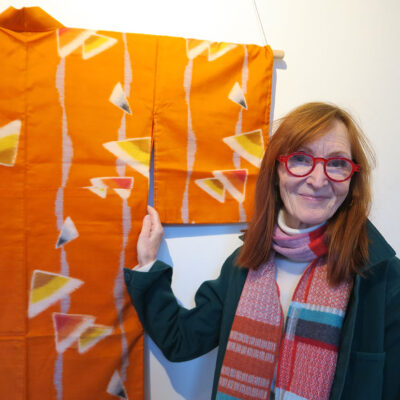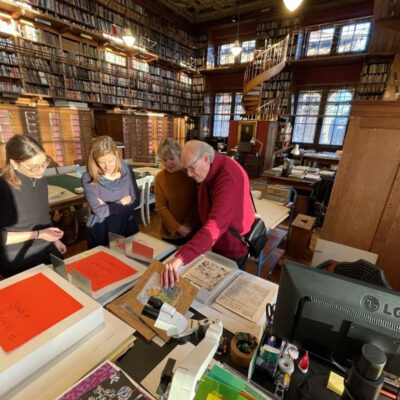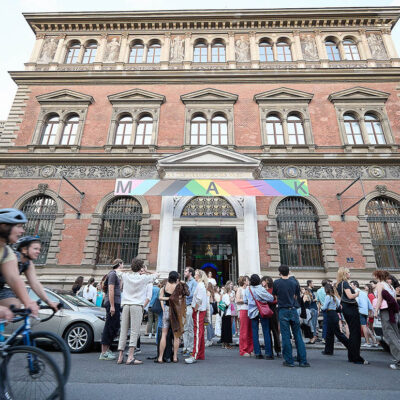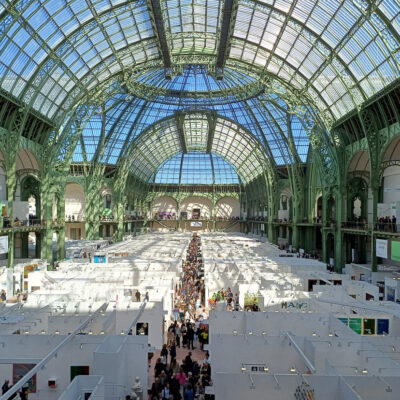Title
- Surface pattern (waritsuke monyō 割付文様), plant pattern (shokubutsu monyō 植物文様): peonies and yabure kikkō 破れ亀甲 ("shredded" kikkō; parts of hexagon surface pattern)
Collection
Period | Style | School
Material | Technique
Measurements
- height: 24.2 cm
- width: 40.6 cm
- pattern - height: 14 cm
- pattern - width: 34.6 cm
Inventory number
- OR 3925-828
Acquisition
- assumption , 1907
Department
- Asia Collection
Associated Objects
- stencil (katagami 型紙), Surface pattern (waritsuke monyō 割付文様), plant pattern (shokubutsu monyō 植物文様): peonies and yabure kikkō 破れ亀甲 ("shredded" kikkō; parts of hexagon surface pattern)
- stencil (katagami 型紙), Surface pattern (waritsuke monyō 割付文様), plant pattern (shokubutsu monyō 植物文様): peonies and yabure kikkō 破れ亀甲 ("shredded" kikkō; parts of hexagon surface pattern)
Description
-
"Dyed ground" (jizomari 地染). Kikkō 亀甲 (tortoiseshell; hexagon) with ornaments, e.g.: kiku shokkō 菊蜀江 (combination of octagon and rectangle with chrysanthemums), chrysanthemums, bishamon kikkō 毘沙門亀甲, seigaiha 青海波 (blue ocean waves), grid pattern with swastika, tatewaku 立湧 (rising steam), interlaced circles (shippō tsunagi 七宝繋ぎ), kikkō tsunagi 亀甲繋ぎ (connected tortoiseshells) and maru bishamon 丸毘沙門 (rounded bishamon kikkō 毘沙門亀甲 wicker pattern).
Peonies symbolise wealth and beauty. Because of their magnificent blossom with many petals, they are often used as a motif for handicrafts. Red peonies were even said to be able ensure longevity and immortality when drunk as an herbal decoction.
Bishamon kikkō 毘沙門亀甲: a surface pattern of three composite kikkō (mitsumori kikkō 三盛亀甲 = „triple“ kikkō). Since Bishamon-ten 毘沙門天, god of fortune and guardian, is often depicted in an armor with this pattern (as in Tōdaiji 東大寺, Nara), this surface pattern is commonly called bishamon kikko.
Seigaiha 青海波 („blue ocean waves): a pattern that can be found in many regions of the world. In Japan it can be found on Haniwa robes from the Kofun period (approx. 300-538). But only since the Kamakura period (1185-1333) has the pattern been associated with water (e.g. Koseto jugs). The name seigaiha 青海波is said to go back to a title of a Gagaku dance.
Shippō tsunagi 七宝繋ぎ („seven Treasures“; interlaced circles): an auspicious pattern (kisshō monyō 吉祥文様) with circles of equal size, placed and connected in an overlapping manner. The circle represents perfection. It is uncertain whether this pattern can be associated with the "Seven Treasures" of Buddhism. Perhaps because human relationships and connections are just as valuable as the “Seven Treasures”.
Kikkō tsunagi 亀甲繋ぎ (connected tortoiseshells/hexagons): a geometric pattern of hexagons, that was already found in Sassanid art and is said to have come to Japan via China and Korea during the Nara period (710-794). Because of the resemblance to the turtle shell shield, it is called kikko 亀甲. It counts as an auspicious pattern (kisshō monyō 吉祥文様) and since the Heian period (794-1185, also 794-1192) also as a 'courtly pattern' (yūsoku monyō 有職文様).
-
stencil (katagami 型紙), Surface pattern (waritsuke monyō 割付文様), plant pattern (shokubutsu monyō 植物文様): peonies and yabure kikkō 破れ亀甲 ("shredded" kikkō; parts of hexagon surface pattern), Anonym, MAK Inv.nr. OR 3925-828
-
https://sammlung.mak.at/en/collect/surface-pattern-waritsuke-monyo-割付文様-plant-pattern-shokubutsu-monyo-植物文様-peonies-and-yabure-kikko-破れ亀_316086
Last update
- 17.04.2025
